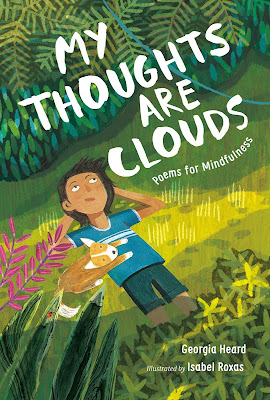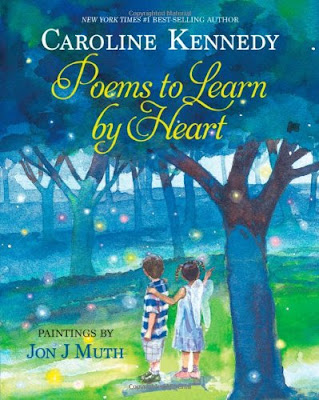Enchanted Air: Two Cultures, Two Wings: A Memoir
Bibliography:
Engle, Margarita. Enchanted Air: Two Cultures, Two Wings: A Memoir. New York: Atheneum Books for Young Readers, 2015. ISBN: 978-1481435222
Summary:
Margarita Engle recounts her childhood flying between her home in Los Angeles and her abuelita’s home in Cuba where she spends her summers. A precocious and curious young girl, Margarita is fascinated by the magical world of nature, especially the dancing plants and exotic farm life she encounters in Cuba. In Los Angeles, she dreams of flying horses and covers her walls with poems. While her mother is Cuban, her father is American and the son of Ukrainian immigrants who fled to the United States. Margarita drifts between two worlds, two cultures, spending sunny summers in Cuba until the Cold War interrupts her travels and separates her from her Cuban relatives, causing her mother to become a “ghost,” or an immigrant with no country. When the “Cuban” Missile Crisis passes without erupting into nuclear war, Margarita is relieved, but her world has changed, her Cuban-American identity met with suspicion, and her Cuban relatives’ letters shrouded in coded language. Margarita’s new understanding of what it means to be a member of many cultures broadens her view as she finds solace and liberation through books, travel, and writing poetry, her family remaining close through it all. The book concludes with a timeline of important events of the Cold War, an author’s note, and a reading group guide with thought-provoking discussion questions for book clubs.
Analysis:
In this historical memoir, Engle captures the wonder of childhood and the anxiety of being a Cuban-American during the Cold War. The title, Enchanted Air, represents the recurring motif of flight that Margarita connects with her cultural identities and her sense of freedom and imagination as she makes the journey by plane every summer to the magical land of Cuba, a place where the impossible regularly happens. In her California kindergarten class, she draws herself with two yellow wings, in a ruffled Cuban rumba dress, clasping a magical turtle in her hand with a colorful parrot soaring overhead. Beside her are dancing trees, the way they are in Cuba, tossed by the ocean wind. Her teacher scolds her for drawing such unrealistic trees, the first of several moments when Margarita realizes that her teacher is wrong. In another picture, Margarita draws the “same gold-winged / rumba dancer, but this time / she’s on horseback, smiling.” She explains, “somehow I know / that I am both / the flying rider / and the swift / steed.” This duality appears in imagery throughout the memoir, and multicultural readers will understand Margarita’s dual-nature, belonging to two languages, two countries, two cultures. The metaphor of wings occurs multiple times, such as in the poem “No Wings” which is about expired passports.
When the Cold War interrupts Margarita’s annual visits to Cuba, Engle captures her fear and anxiety in short, rhythmic lines: “Air-raid drills at school. / Doomsday warnings. // Rants against the island. / Hate talk. / War talk. / Sorrow. / Rage.” Even after the missile crisis passes (“Diplomacy succeeds. Words win.”), Engle makes poignant use of metaphor to show how the world has changed: “ It’s safe to inhale now. / No radiation. // No poison. / Except for the toxins / left behind in teachers’ minds / when they talk / about Cuba.”
Engle strikes an appealing balance between the lush and textured descriptions of beautiful plants and animals in Cuba and the terrifying uncertainty of the Cold War. Her memoir is sensitive and powerful, full of poignant moments that will leave a lasting impression on readers, personalizing the Cold War era from the point of view of a talented poet with insight into both Cuba and the United States.
Winner of the Pura Belpré Award, winner of the Walter Dean Myers Honor Award for Outstanding Children’s Literature, and finalist for the YALSA-ALA Excellence in Young Adult Nonfiction award. Ages 12 and up.
Excerpt:
“Communication”
Cuba starts to seem real again.
Abuelita writes letters in code,
inventing poetic metaphors,
to prevent the island’s censors
from understanding her words.
When she says that Tio Dario
is working hard in the garden,
Mom somehow knows that it means
he’s been arrested, and sent
to a prison or a forced labor camp.
We don’t know why--did he give food
to those counterrevolutionaries
fighting in the mountains?
Did they drink fresh milk
and chew sweet sugarcane
from emerald green fields?
Other news is just as shocking.
Singing vendors are outlawed.
Selling anything is illegal
No one is allowed to make a profit.
Religions will soon be outlawed too.
What will happen to the eternal flame
that Abuelita ignited when Mad
survived polio
so long ago?
Activity:
Recreate the Cold War Timeline from the end of Enchanted Air on the walls of a classroom, library, or hallway. Measure out the timeline to scale, and invite students to print photos and newspaper headlines and arrange them by date of the event on the timeline. After the timeline is complete, walk the timeline as a group, taking turns reading excerpts from Enchanted Air that coincide with the significant events.




Comments
Post a Comment